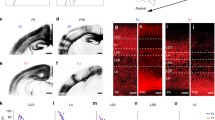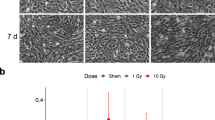Abstract
THE development of the central nervous system is characterised by the formation of specific synaptic connections. Highly selective connections form not only between classes of neurones, but also between specific neurones within classes. An additional degree of specificity is observed when the presynaptic axons contact only a limited portion of the target neurone. This kind of specificity is conspicuous in the dentate gyrus (fascia dentata) of the mammalian cerebral cortex. We describe here a situation in which the dentate gyrus offers a unique opportunity to test some of the hypotheses that may explain the selective termination of different afferents on restricted portions of the surface of a neurone.
This is a preview of subscription content, access via your institution
Access options
Subscribe to this journal
Receive 51 print issues and online access
$199.00 per year
only $3.90 per issue
Buy this article
- Purchase on Springer Link
- Instant access to full article PDF
Prices may be subject to local taxes which are calculated during checkout
Similar content being viewed by others
References
Steward, O. J. comp. Neurol. 167, 285–314 (1976).
Hjorth-Simonsen, A. J. comp. Neurol. 146, 219–232 (1972).
Hjorth-Simonsen, A. & Laurberg, S. J. comp. Neurol. 174, 591–606 (1977).
Angevine, J. B., Jr Expl. Neurol. suppl. 2, 1–70 (1965).
Bayer, S. A. & Altman, J. J. comp. Neurol. 163, 1–20 (1975).
Schlessinger, A. R., Cowan, W. M. & Gottlieb, D. I. J. comp. Neurol. 159, 149–176 (1975).
Hjorth-Simonsen, A. Stain Technol. 45, 199–204 (1970).
Haug, F.-M. S. Adv. Anat. Embryol. Cell Biol. 47, 1–71 (1973).
Devor, M., Caviness, V. S., Jr & Derer, P. J. comp. Neurol. 164, 471–482 (1975).
Stanfield, B. B., Caviness, V. S., Jr & Cowan, W. M. Neurosci. Abst. 1, 1190 (1975).
Loy, R., Lynch, G. & Cotman, C. W., Brain Res. 121, 229–243 (1977).
Fricke, R. & Cowan, W. M. J. comp. Neurol. 173, 231–250 (1977).
Hicks, S. P. & D'Amato, J. in Advances in Teratology (ed. Woollam, D. H. M.) 195–250 (Logos, London, 1966).
Cotman, C. W. & Banker, G. A. in Reviews of Neuroscience (eds Ehrenpreis, S. & Kopin, I. J.) 1–62 (Raven, New York, 1974).
Bradley, P. & Berry, M. Brain Res. 109, 133–151 (1976).
Jones, W. H. & Thomas, D. B. J. Anat. 96, 375–381 (1962).
Stirling, V. R. & Bliss, T. V. P. Brain Res. (in the press).
Author information
Authors and Affiliations
Rights and permissions
About this article
Cite this article
LAURBERG, S., HJORTH-SIMONSEN, A. Growing central axons deprived of normal target neurones by neonatal X-ray irradiation still terminate in a precisely laminated fashion. Nature 269, 158–160 (1977). https://doi.org/10.1038/269158a0
Received:
Accepted:
Published:
Issue Date:
DOI: https://doi.org/10.1038/269158a0
This article is cited by
-
Molecules, maps and synapse specificity
Nature Reviews Neuroscience (2001)
-
Characterization of GABAergic neurons in hippocampal cell cultures
Journal of Neurocytology (1994)
-
Brain grafts can restore irradiation-damaged neuronal connections in newborn rats
Nature (1984)
Comments
By submitting a comment you agree to abide by our Terms and Community Guidelines. If you find something abusive or that does not comply with our terms or guidelines please flag it as inappropriate.



